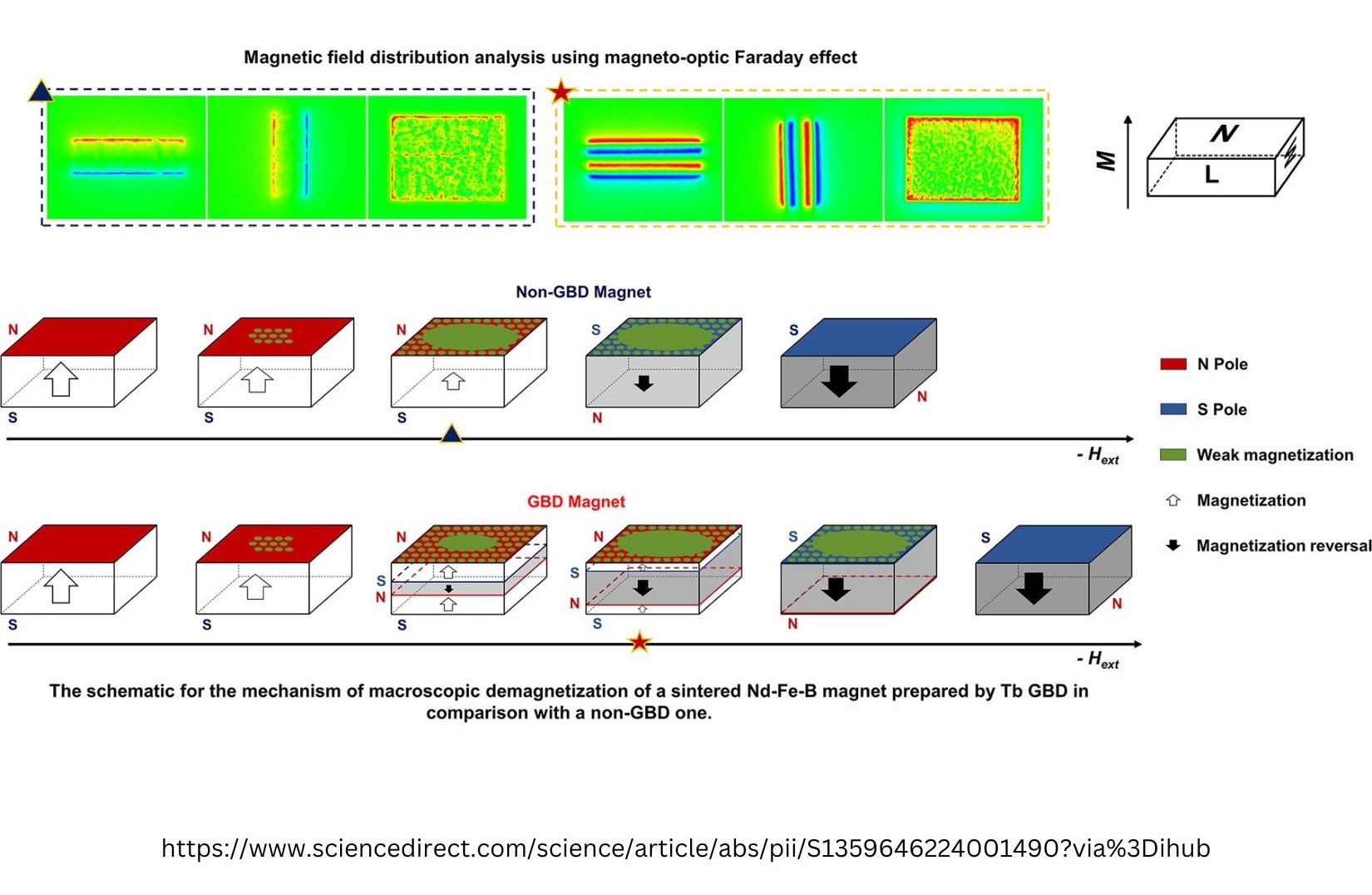Sintered Nd-Fe-B magnets have revolutionized numerous industries, from renewable energy to consumer electronics, with their exceptional performance. These magnets are vital for our technological progress, and continuous advancements in processing technology have further improved their reliability and efficiency.
One such advancement is the grain boundary diffusion (GBD) technology, which enhances the coercivity of sintered Nd-Fe-B magnets while maintaining the remanent magnetization, optimizing the use of critical materials like Tb/Dy.
In a recent study, researchers investigated the demagnetization of sintered Nd-Fe-B magnets prepared using GBD, comparing them with non-GBD magnets. They examined how these magnets responded to different external demagnetizing fields to understand their coercivity mechanisms better.
Microscopic examination of the GBD magnets revealed a core-shell structure within the grains, with Tb-enriched shells surrounding Nd2Fe14B cores. This arrangement enhanced the local anisotropy within the material, contributing to its improved magnetic properties.
Further investigation using magnetic field distribution analysis showed that demagnetization in GBD magnets initiated both at the surface and the center region. As the external magnetic field increased, demagnetization spread across layers with comparable coercivity, forming new poles near the center. Eventually, these new poles replaced the original poles, indicating reversed magnetization.
In contrast, non-GBD magnets exhibited demagnetization mainly at the surface, with magnetization reversal propagating quickly from one grain to another. This difference in demagnetization behavior underscores the unique coercivity mechanism of GBD magnets.
Understanding the coercivity mechanisms of advanced magnets like those prepared by GBD is crucial for optimizing their performance and operating conditions. This study provides valuable insights into the demagnetization processes of sintered Nd-Fe-B magnets, paving the way for further advancements in magnet technology.
A more detailed description of the study is available in Scripta Materialia 247 (2024) 116113.

